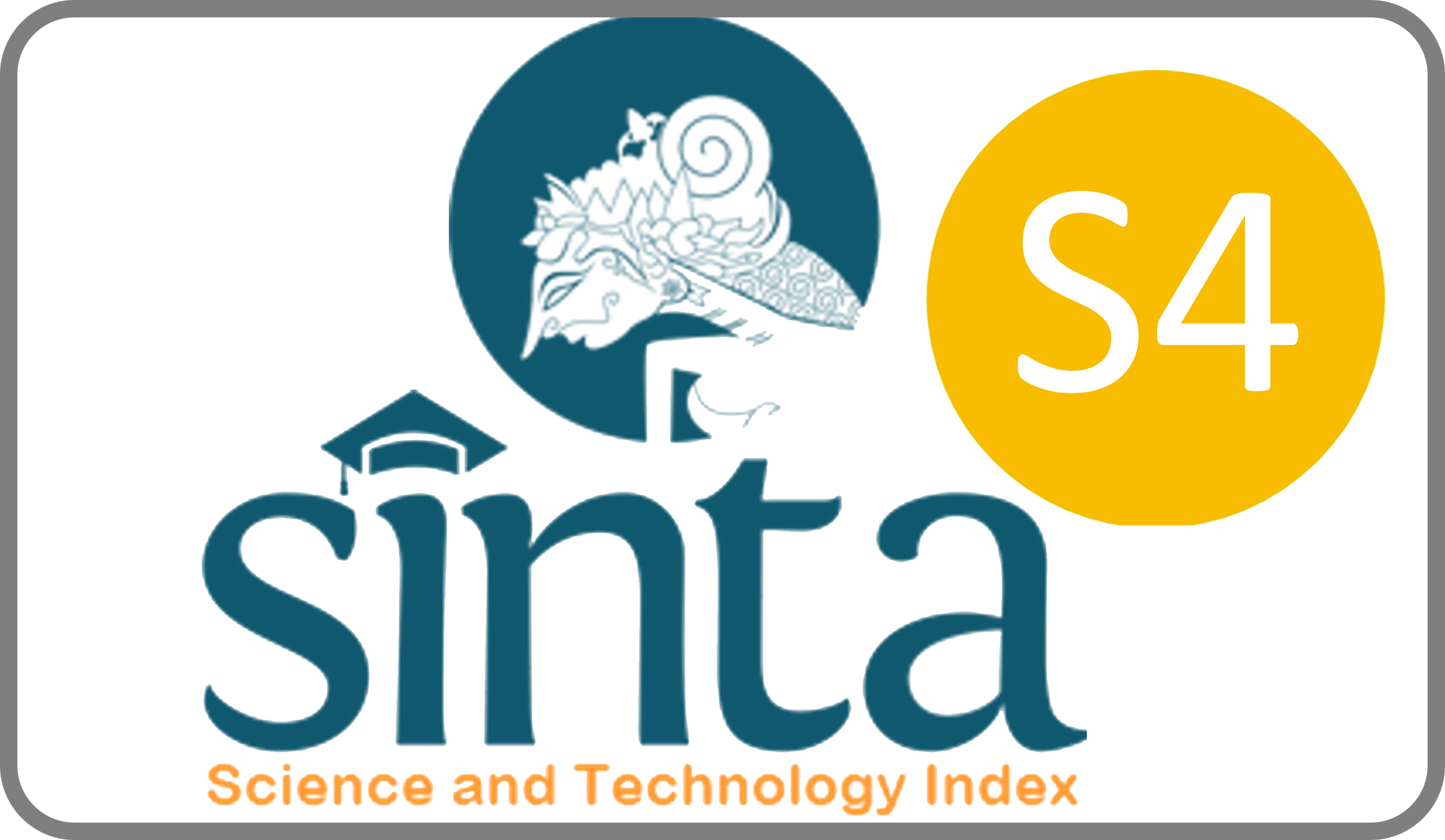THE UTILIZATION OF 900 WP OFF-GRID SOLAR POWER PLANT FOR PRODUCT INTENSIFICATION OF A HYDROPONICS FARMER GROUP
Downloads
In collaboration with a group of hydroponics farmers, an activity as a part of community service implementation has been carried out in Pasuruan, Eastern Java. The activity aims to develop a 900 Wp solar power plant capable of providing energy for running the essential electrical devices for the hydroponics system uninterrupted. This idea is to resolve the energy issue when the outage occurs. Moreover, the reliance on the public grid also adds additional expense for the electricity bill. Based on the observation, the power plant reliably provides sufficient energy to turn on different hydroponics electrical devices. It can supply energy for 12 hours without charging to activate, in total, 160 Watt of diverse loads all night long. While during the day, solar panels deliver energy for the batteries recharging and the other loads. Some other facilities are also developed in this activity, including UV plastic roof and addition of the grow lights to promote the plants' growth acceleration. The plastic roof efficiently reduces the sunlight intensity to lower the heat experienced by the plants, transmits specific wavelengths crucial for growth, and prevents the rainwater from entering the nutrient water tank. Meanwhile, the grow lights stimulate faster growth and quickly recover the plants after receiving much heat that causes them to look wilt. As a result, the farmers are now less reliant on the public grid, and the hydroponics system is more weather-resistant.
LED Grow Light Radiation Technology to Accelerate Hydroponic Plant Growth in the Sidomulyo Hydroponics Business in Perhentian Marpoyan Village, Marpoyan Damai District, Pekanbaru City. Jurnal Pengabdian dan Pemberdayaan Masyarakat Indonesia, 2(1).
Baiyin, B., Tagawa, K., & Gutierrez, J. (2020). Techno-Economic Feasibility Analysis of a Stand-Alone Photovoltaic System for Combined Aquaponics on Drylands. Sustainability , 12(22), 9556.
Barbosa, G. L., Gadelha, F. D., Kublik, N., Proctor, A., Reichelm, L., Weissinger, E., . . . Halden, R. U. (2015). Comparison of land, water, and energy requirements of lettuce grown using hydroponic vs. conventional agricultural methods. International journal of environmental research and public health, 12(6), 6879–6891. doi:https://doi.org/10.3390/ijerph120606879.
Bouzidi, B., & Campana, P. E. (2021). Optimization of photovoltaic water pumping systems for date palm irrigation in the Saharan regions of Algeria: increasing economic viability with multiple-crop irrigation. Energy, Ecology and Environment, 6(4), 316–343.
Chel, A., & Kaushik, G. (2011). Renewable energy for sustainable agriculture. Agronomy for sustainable development, 31(1), 91–118.
Cossu, M., Yano, A., Solinas, S., Deligios, P. A., Tiloca, M. T., Cossu, A., & Ledda, L. (2020). Agricultural sustainability estimation of the European photovoltaic greenhouses. European Journal of Agronomy, 118, 126074.
FAO. (2012). FAO in the 21st Century: Ensuring Food Security in a Changing World: Executive Summary. FAO.
Garcia, A. M., Gallagher, J., Chacon, M. C., & Mc Nabola, A. (2021). The environmental and economic benefits of a hybrid hydropower energy recovery and solar energy system (PAT-PV), under varying energy demands in the agricultural sector. Journal of Cleaner Production, 303, 127078.
Gleick, P. H. (2010). Roadmap for sustainable water resources in southwestern North America. Proceedings of the National Academy of Sciences, 107(50), 21300–21305. doi:https://doi.org/10.1073/pnas.1005473107.
Gomez, C., Currey, C. J., Dickson, R. W., Kim, H.-J., Hernandez, R., Sabeh, N. C., . . . Burnett, S. E. (2019). Controlled environment food production for urban agriculture. HortScience, 54(9), 1448--1458. doi:https://doi.org/10.21273/HORTSCI14073-19.
Gorjian, S., Calise, F., Kant, K., Ahamed, M. S., Copertaro, B., Najafi, G., . . . Shamshiri, R. R. (2020). A review on opportunities for implementation of solar energy technologies in agricultural greenhouses. Journal of Cleaner Production, 124807. doi:https://doi.org/10.1016/j.jclepro.2020.124807
Hassan, G. E., Salah, A. H., Fath, H., Elhelw, M., Hassan, A., & Saqr, K. M. (2016). Optimum operational performance of a new stand-alone agricultural greenhouse with integrated-TPV solar panels. (Elsevier, Ed.) Solar Energy, 136, 303–316. doi:https://doi.org/10.1016/j.solener.2016.07.017.
Hollingsworth, J. A., Ravishankar, E., O'Connor, B., Johnson, J. X., & DeCarolis, J. F. (2020). Environmental and economic impacts of solar-powered integrated greenhouses. Journal of Industrial Ecology, 24(1), 234–247.
Killebrew, K., & Wolff, H. (2010). Environmental impacts of agricultural technologies.
Nasution, I., Munawar, A., Satriyo, P., Gunawan, H., Yunus, Y., & others. (2021). Precision agriculture: automated irrigation system in tandem with solar panels for melon farming cultivation. IOP Conference Series: Earth and Environmental Science, 644(1), 012084. doi:DOI:10.1088/1755-1315/644/1/012084
Pascaris, A. S., Schelly, C., Burnham, L., & Pearce, J. M. (2021). Integrating solar energy with agriculture: Industry perspectives on the market, community, and socio-political dimensions of agrivoltaics. Energy Research & Social Science, 75, 102023. doi:https://doi.org/10.1016/j.erss.2021.102023
Pinho, P., Jokinen, K., & Halonen, L. (2017). The influence of the LED light spectrum on the growth and nutrient uptake of hydroponically grown lettuce. Lighting Research & Technology, 49(7), 866–881.
Putera, P., Novita, S. A., Hamid, M. I., & Syafii, S. (2015). Development and Evaluation of Solar--Powered Instrument for Hydroponic System in Limapuluh Kota, Indonesia. Advanced Science Engineering Information Technology, 5(5), 284–288.
Rao, M. J., Sahu, M. K., & Subudhi, P. K. (2018). Pv based water pumping system for agricultural sector. Materials Today: Proceedings, 5(1), 1008–1016.
Copyright (c) 2023 Rizki Putra Prastio, Prisma Megantoro, Syamsul Arifin, Dimas Dzaky Rafii Muhammad, Irsyad Hilmi, Sigit Dani Perkasa

This work is licensed under a Creative Commons Attribution-ShareAlike 4.0 International License.
JLM by Unair is licensed under a Creative Commons Attribution-ShareAlike 4.0 International License.
1. The journal allows the author to hold the copyright of the article without restrictions.
2. The journal allows the author(s) to retain publishing rights without restrictions
3. The legal formal aspect of journal publication accessibility refers to Creative Commons Attribution Share-Alike (CC BY-SA).
4. The Creative Commons Attribution Share-Alike (CC BY-SA) license allows re-distribution and re-use of a licensed work on the conditions that the creator is appropriately credited and that any derivative work is made available under "the same, similar or a compatible license”. Other than the conditions mentioned above, the editorial board is not responsible for copyright violation.


















